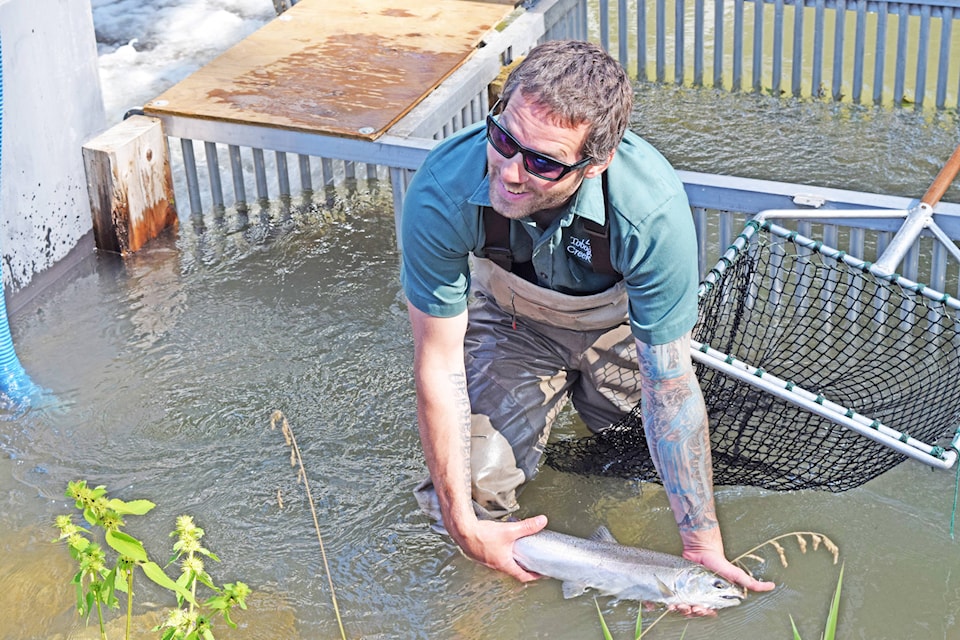Even before their fish fence was ripped apart on two separate occasions in 2017, the folks at the Toboggan Creek Fish Hatchery (TCFH) knew it had to be replaced.
The wooden structure had been there for a little over 30 years and was constructed out of now-rotting wood that had served its purpose but was no longer able to stand up to the elements.
So the TCFH built a brand new steel fish fence, completed last summer.
And while that fence had to go its first season without a bridge, TCFH manager Kris Bulloch said the fence design is now 100 per cent complete.
READ MORE: Toboggan Creek Fish Hatchery encourages community involvement
Prior to the bridge being built, Bulloch said the hatchery was uses boards attached to the fence to hold it up.
“The bridge is the part that actually is supposed to hold the fence up. It’s kind of [like] the anchor point [that] allows us to be able to lower it and raise it if there’s any high water.”
Bulloch said this ability — to raise or lower the fence in times of high or low water — is essential to the hatchery.
That’s because the TCFH is contracted to raise 35,000 Coho a year by Fisheries and Oceans Canada (DFO).
It’s these populations, which the organization monitors closely through yearly assessments, that largely inform DFO’s policies pertaining to Coho in the area as the TCFH is the only Coho hatchery on the Skeena.
“Say you have 35,000 fish that we release here and then we get 1,500 hundred hatchery marked coho back, well that gives you the survival rate,” said Bulloch.
But the fishes varied return cycles means that the hatchery sometimes has to get creative when it comes to identification methods.
“They generally come back as four year olds but they also come back as three and five.
“So that’s why we take the DNA in the scales because then they can tell which ones are four year olds and they can tell you exactly how many fish we let go and exactly how many came back. And it gives them the most accurate ocean survival rate that you can get.”
As Bulloch explains, that’s where the new fence comes in.
“Every single fish that comes up this stream from August 1 until October 31 — which is the Coho window — we take them out of [the fish fence trap] and then we decide whether they’re male or female, hatchery or wild, compile all those numbers and then give them to the DFO.
“That’s basically what they use for ocean survival of coho.”
READ MORE: Sockeye fishing closure hits local economy
On top of of their enhancement contract to raise coho, Bulloch said the organization also has an assessment contract with the DFO.
“So our assessment contract is what the tagging, clipping and the fence is and [it’s] basically there to give the DFO all of our statistical data.”
The fence has reached its completion at the same time that the region is currently facing a number of recreational fishing closures.
After announcing a blanket fishing closure on salmon in the Skeena River Watershed beginning July 27, the DFO announced limited openings for pink and coho in the area on August 15.
The TCFH has been collecting data for nearly 35 years, since 1985.
Bulloch says anyone wanting to view the TCFH’s fish fence should contact the organization first for approval, as the fence itself is on private property.
